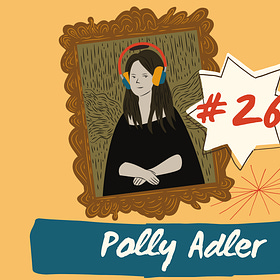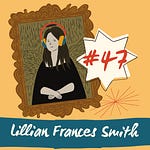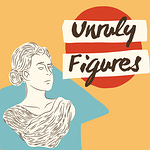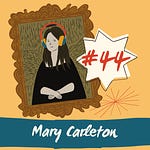Hi everyone,
I’m back this week with another bonus episode: the history of the vamp! No, not vampires, but the archetype, the fashion statement, the original femme fatale. I talked about them very briefly during the Polly Adler episode, but I wanted to dig further into this trend, especially because a hundred years later, it’s still with us. Every time you see someone putting on dark lipstick and dark eyeshadow in the fall, it’s a continuation of the Vamp look. So let’s dig in!
Episode 26: Polly Adler
🎙️ Transcript
Hey everyone, and welcome to another bonus episode of Unruly Figures. This week I wanted to dig into the vamp, which I talked a little about in the Polly Adler episode—more than just a daring fashion statement, in the 19-teens she was an icon of rule-breaking feminity.
The story begins, as it honestly must, with a heartbroken man. It was artist Philip Burne-Jones, cousin of Rudyard Kipling, who fell for a married woman in London during the summer of 1897. Her name was Mrs. Patrick Campbell—she was a beautiful actress as well as wealthy and gossiped about; an English Victorian equivalent to Sarah Bernhardt. Philip was the son of Sir Edward Burne-Jones, a famous early Victorian painter, and was struggling to get out of his shadow; their much-gossiped-about affair helped. Even at the time, people wondered if Mrs. Pat wasn’t just using the thirty-something to get to his more famous father; whatever her motivations, she dumped him for a costar rather quickly.
Heartbroken, enraged, and abandoned, Philip painted his most famous work in a fit. It depicts a young man, his shirt unbuttoned and chest exposed, laying on a couch, clearly unconscious. Looming over him is a dark-haired woman, with a cruel look on her face and clearly predatory in her stance. (An image is in the Substack.) He called it The Vampire.

The work was shown at the New Gallery and became a sensation—a scandalous one. Everyone knew who Philip was depicting, and Mrs. Pat’s established fame fanned the flames. Philip also commissioned Rudyard Kipling to write a poem to accompany the painting, which also became a hit. (I’ve included it at the end.) Victorian London was already obsessed with vampires when the painting came out—Bram Stoker’s famous novel Dracula had been published earlier the same year, and of course, Sheridan Le Fanu’s Carmilla, sometimes called the original vampire story, had been published twenty-five years earlier and achieved cult classic status.
It’s worth noting that Stoker was friends with Philip, they were both friends with Sir Arthur Conan Doyle, and all of them were interested in vampires, of course.
Listen to this episode with a 7-day free trial
Subscribe to Unruly Figures to listen to this post and get 7 days of free access to the full post archives.













